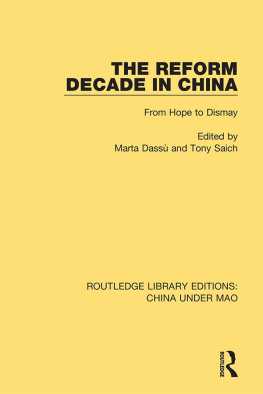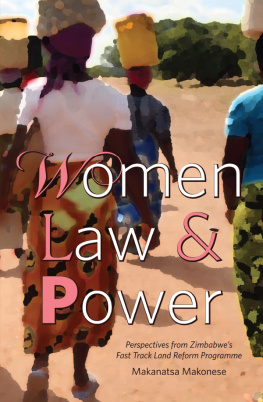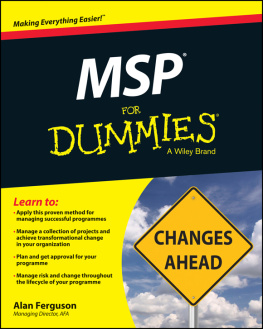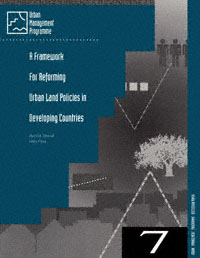| This document has been prepared under the auspices of the United Nations Development Programme/United Nations Center for Human Settlements (Habitat)/World Bank-sponsored Urban Management Programme. The findings, interpretations, and conclusions expressed here are those of the authors and do not necessarily represent the views of the United Nations Development Programme, UNCHS, World Bank, or any of their affiliated organizations. |
| Deputy Director
Division for Global and Interregional Programmes
United Nations Development Programme |
| Chief
Technical Co-operation Division
United Nations Center for Human Settlements (Habitat) |
| Chief
Urban Development Division
Transport, Water, and Urban Development Department
Environmentally Sustainable Development
The World Bank |
|
|
Copyright 1996
The International Bank for Reconstruction
and Development/THE WORLD BANK
1818 H Street, N.W.
Washington, D.C. 20433, U.S.A. |
All rights reserved
Manufactured in the United States of America
First printing August 1996 |
| The Urban Management Programme (UMP) represents a major approach by the United Nations family of organizations, together with external support agencies (ESAs), to strengthen the contribution that cities and towns in developing countries make towards economic growth, social development, and the alleviation of poverty. The program seeks to develop and promote appropriate policies and tools for municipal finance and administration, land management, infrastructure management, and evnironmental management. Through a capacity building component, the UMP plans to establish an effective partnership with national, regional, and global networks and ESAs in applied research, dissemination of information, and experiences of best practices and promising options. |
| The findings, interpretations, and conclusions expressed in this paper are entirely those of the author(s) and should not be attributed in any manner to the World Bank, to its affiliated organizations, or to members of its Board of Executive Directors or the countries they represent. The World Bank does not guarantee the accuracy of the data included in this publication and accepts no responsibility whatsoever for any consequence of their use. Any maps that accompany the text have been prepared solely for the convenience of readers; the designations and presentation of material in them do not imply the expression of any opinion whatsoever on the part of the World Bank, its affiliates, or its Board or member countries concerning the legal status of any country, territory, city, or area or of the authorities thereof or concerning the delimitation of its boundaries or its national affiliation. |
| The material in this publication is copyrighted. Requests for permission to reproduce portions of it should be sent to the Office of the Publisher at the address shown in the copyright notice above. The World Bank encourages dissemination of its work and will normally give permission promptly and, when the reproduction is for noncommercial purposes, without asking a fee. Permission to copy portions for classroom use is granted through the Copyright Clearance Center, Inc., Suite 910, 222 Rosewood Drive, Danvers, Massachusetts 01923, U.S.A. |
|





